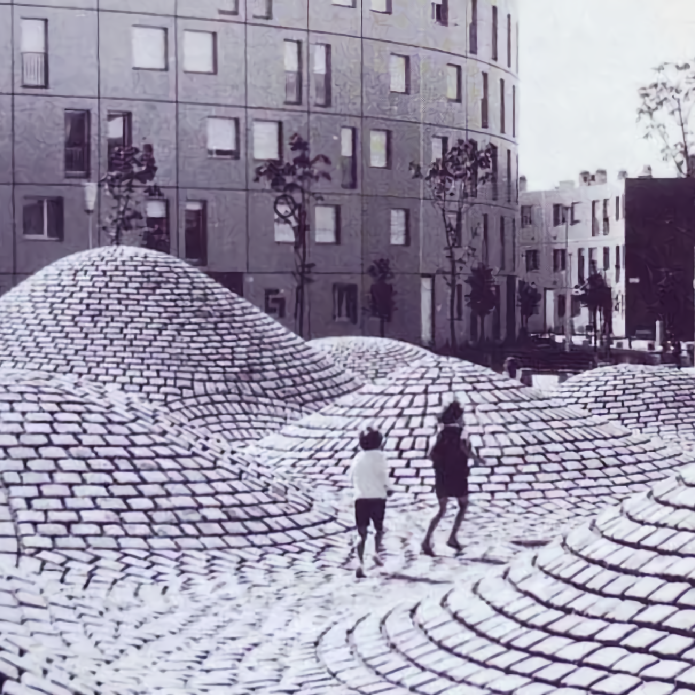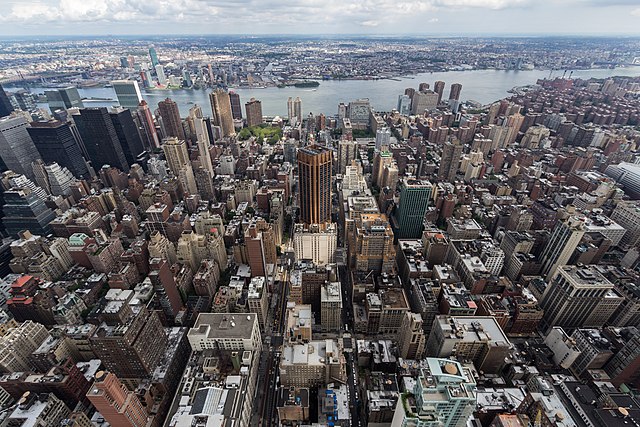
So what you want is that all a fossil fuel company needs to do to sabotage a climate movement is to endorse someone in it?

So what you want is that all a fossil fuel company needs to do to sabotage a climate movement is to endorse someone in it?

Wasting money on bad solutions is not the same as fucking it up completely.
Also, I don’t know if you’re being unrealistically optimistic or unrealistically pessimistic, but there are still deeper depths to sink to than just fucking up the climate. That still has a whole range from reducing the carrying capacity of the earth to 5 billion or to 5 million or 5 thousand or zero, and there are more or less horrifying ways to handle that drop too.


Annoying that western charity is so self-aggrandizing that such an addendum is necessary, but fair. Ideally “send X” just *means *“send X and the systems to make good use of X”.

Damn, this one of the big pushes of Extinction Rebellion Netherlands. Glad to see that unauthorized disruptive protest works.
They say that, but there are people out there deliberately breeding humans to keep the population up so human hunting remains justified, and these wild humans do terrible damage to the environment by over-foraging.


I fear for induced demand. If electricity is cheap, why build more efficiently? Why not do bitcoin mining or AI training?
It wouldn’t be so bad if there weren’t plenty of places around the world that could desperately use solar panels, that are building fossil fuel infrastructure instead. Climate change is a global problem, so the obsession with getting your individual emissions down to zero is selfish and sometimes even detrimental to the climate if “your emissions” don’t include the cost of manufacturing and limited availability.
We should be sending solar panels to the developing world as fast as humanly possible, not making electricity so cheap in California that multinationals can open up a couple more data centers.


They’re using hydrogen to de-rust iron, and later let the iron rust again. I don’t have a degree in chemistry, but that sounds like a scam.
There are basically two sources of hydrogen that matter at an industrial scale: fossil fuel cracking (not clean energy) and electrolysing water. In the first case, if you want power it’s more green to burn the fossil fuel directly.
And if you’re electrolysing water and then using the hydrogen to chemically derust iron, it would (as far as i understand with high school chemistry) be strictly more efficient to electrolyse rust directly. The oxygen can dissipate into the environment or be reintroduced as necessary, like with a sacrificial metal for ship’s hulls.
It’s undoubtedly innovative that they have a relatively efficient way to store the latent chemical energy of hydrogen given an excess of hydrogen, but in terms of energy storage that is putting the cart before the horse.

before riots
- the post title

Glad to see their talking points focus on food security rather than agricultural companies’ interests like the EU. Though I wonder if they’ll come to the sensible conclusion and cut down on the meat industry.

Latest*
It’s not even a particularly bad one, compared to Dole coups, Coca Cola assassination, and Uniroyal napalming civilians.


People have survived “deadly” wet bulb temperatures long before electric refrigeration. Air conditioning is a patch for colonial societies and those that emulate them that have stupidly built western European style (Cfb climate optimized) housing in tropical climates.
Universal solidarity doesn’t just mean solidarity with the poorest US citizens, it means solidarity with the billions of people who don’t have AC or a car. Giving US citizens who already have AC and a car free electricity will probably be less effective and less equitable than a more egalitarian degrowth-based distribution of resources.The OOP mentions electric cars, which are simply a luxury when public transit and utility vehicles (kei trucks, vans) exist. Air conditioning likewise can be a luxury when passive design exists. Cisterns, shade, plant respiration, air flow management, high roofs, large communal spaces that reduce outer surface area, etc.
People have a right to live a cool and comfortable life, but that does not mean the right to live in a nuclear family suburban home with paper-thin walls and not a tree in sight, basking in full sunlight, with AC on full blast, using your electric SUV to drive half an hour to the grocery store or school. A tropical longhouse shared with your community, a natural or artificial cave system, or living somewhere that isn’t trying to kill you (as badly) can serve that purpose just as well.
So instead of pushing for free electricity for American citizens, I would much rather push for degrowth of the American economy, with smarter designs that simply need less electricity.


In fiction, you can pretty much always create a reason, and if you have a reason, then that is valid.
That said, the point of using wetlands as a buffer is that the area is too polluted for long-term human exposure, so you might as well give it to nature. Wetlands do nothing to filter out most pollution, the pollution is either removed through industrial processes or slowly allowed to dissipate out into the ocean. As for how wide wetlands should be - right now that’s just the area with an above-acceptable chance of above-acceptable pollution for human habitation or workplace exposure. It depends on where the pollution flows to, how quickly it dissipates and in which ways, etc.
So allowing human habitation in those wetlands is missing the point that caused our capitalist society to restore wetlands there: liberal environmentalists demanded a quota for natural area, and the polluted land is worthless for other uses, so by making them wetlands you satisfy the environmentalists at minimum cost to capital. The animals and plants suffering from the effect of exposure to pollution is not your problem, as long as it still looks pretty enough for photo opportunities and as long as you fund biologists who Monitor the Situation.
Hating to lose things can come from a place of sunk cost fallacy. Reusing existing buildings is often less efficient than building from scratch, and the reason it is so often worth it in the present day is because capitalism is horribly inefficient at land use because land ownership is basically an untaxed way to leech money off the efforts of everyone around it.
However, in your scenario as presented, you’re dealing with a neighborhood built by capitalists in the expectation that the neighborhood would be dry land. It seems very unlikely that the capitalists that built it would have paid the extra money to make those buildings able to handle flooding well. This means rotting drywall and insulation, waterlogged concrete, rusting metal frames, essential household infrastructure like fuse boxes and central heating and sewage pumps being destroyed beyond repair in flooded basements, etc. Using these places in spite of that would likely mean either massive maintenance cost or massive health issues.
It is plausible that in a capitalist society a place like this would be used as a shanty town. In most places in the US, shanty towns are demolished by police because “ew, gross” and because they prefer to send the people that would use them to for-profit prisons. However, it would be on-brand for California to officially endorse the shanty town as a capitalist pseudo pro-housing waffle. Between the lack of functioning infrastructure, the toxic pollution, the building damage, and everything else, quality of life would be pretty bad, but many people may choose it over not having a roof over their heads or becoming a slave to the prison industrial complex or even over the quality/cost of available regular lower class housing in California.
In a solarpunk society, I find hard to imagine that living in rotting flooded housing would be preferable to deconstructing the neighborhood and building adequate housing elsewhere. Reuse is only good if the cost of reuse isn’t greater than the combined cost of disposal and replacement or salvaging and reuse in a different context.
Maybe it could work if most of the reconstruction efforts were done as a capitalist shanty town. Put one or more decades of capitalism after the flooding, enough that a rich amphibious local culture has arisen, the bulk of the reconstruction costs have already been borne, and pollution has diminished so it’s no longer an active health hazard in most of the town. It could be an incrementalist history, where the emphasis on capitalist incentives slowly diminishes over time and people go from living in the shanty town because of work and rent and shelter to living there because of the people and the land, or it could be a revolutionary history, where capitalist structures in the shanty town are finally removed or reclaimed.
With the first option, you would have to be careful to show that this isn’t just the first step of the same cycle of gentrification that has affected successful shanty towns since the dawn of time. Many fashionable capitalist consumer things are cleaned-up versions of poor people managing to survive and thrive 50-100 years earlier. What decisions does society make that show it turning away from the cycle of externalization, exploitation, and commodification?
With the second option, you would have to be careful to show which parts are capitalist and which are postcapitalist. When they use something that is only sensible because of initial capitalist investment, how is it clear that they wouldn’t build it that way today and what other choices they would make? What makes their lives worse than those of people from flooded towns who immediately got a solarpunk response, and why do they choose this place anyway?


Thank you for your thoughtful response. I appreciate you trying to keep your work accessible and comprehensible to casual viewers, and that it’s hard to describe a happy relocation, especially in a single image. You’ve clearly put a lot of thought into the messaging. I personally have difficulty accepting flawed/imperfect/good-enough solutions, and it’s nice to have more grounded people actually getting a positive message out there even at the cost of accuracy.
All of that said, refugees and migrants already exist, and they already face the same struggle of wanting to preserve the culture they have been forced away from. The question of how to make migrations as pleasant as possible and rebuild as much of the physically embodied culture that was left behind as possible is one that is very relevant right now, so I would love to see you make a postcard of a migrant town, if you don’t already have one. If you can show how even migration can be a place of solarpunk joy, then suddenly the people of New Orleans do have a realistic joyful future despite the bleak prospect of evacuation.
Personally, a full diaspora seems like an unnecessary loss. Modern western policies of spreading migrants thinly over as wide an area as possible to prevent them from coming together to celebrate the world they left behind are horrific. Migration is at its most beautiful in a place like 19th-20th century New York City, with the best parts of several dozen distinct cultures being reproduced side by side and then mixing together into something novel and rich.
If New Orleans had to be evacuated, I wouldn’t want its culture to dilute as everyone from there is forced to make the separate choice to let their distinctiveness be subsumed by their peers. I would like a bunch of Little New Orleanses, hundreds of migrants all living together in the same neighborhood celebrating the old culture and mingling with the locals, choosing their own rate of change and having enough mass to make other groups consider their perspective and values and artforms.


As you say, the obvious answer is “don’t build cities in swamps”. Before designing anything concrete, you have to decide why you want to overcome that answer - Is it a harbor, like New Orleans or Amsterdam used to be? Is it a cultural heritage site, like New Orleans or Amsterdam now primarily are? Are there natural resources? Is it a hub for locals to access more specialized goods and services, like specialty medicine? Or is it there because people think it’s cool and they have enough money to let it exist regardless of sense?
Whatever the answer, the form follows that function. Build everything on the principles that drive people to want to live there rather than anywhere else.
So why do you think solarpunk people would choose to build a city in a swamp? And what are the amenities that follow from that need?
If you are trying to preserve a historic town like New Orleans or Amsterdam despite floods and rising sea levels, then your goal is to defy natural change in order to keep things the same. The natural form for that function would be a massive dyke built around all that you want to preserve, so that everything looks just like you want, come hell or high water. (Lifting historic buildings is unfathomably expensive and would change the original feel, so it’s less ideal).
This is not a solarpunk design because the function of preservation is not solarpunk. New Orleans and Amsterdam weren’t built as a place for culture to arise, let alone to preserve some older culture. They were port towns, and they were built with practical purpose. Everything good there arose because working class people from diverse cultures decided to hang out and have fun together, and the same can be done everywhere. If we want to honor the meaning of New Orleans and Amsterdam culture, we let those cities sink into the ocean and focus on having lively third places for the working class in this day and age.
There are things we can bring with us or rebuild in the old style, but loss and adaptation are natural.
Hope and positivity are two different things. Hope dissociates from the present and the future, externalizing your care into an imagined future you can not affect. Empirically, people with hope fare worse psychologically than those without hope, because those with hope have no coping mechanisms when their hopes get dashed.
What we need is not positive news, but a positive life. Sit in a meadow, share meals with friends, be kind and generous, work at things that mean something to you, make art with passion, and rage during political protests.
When so much of the world’s news and media are pushing a narrative of unending consumerism and growth, it is good to keep reminding ourselves with factual news that this world will collapse sooner rather than later.
If it helps, all life ends in misery, be it decreptitude, disease, ecosystems collapse, or all of the above. Life has never been about how it ends, it is about what we do while delaying the end. Everything we do for the future, we do for the future that will actually be, not for the future that gives us comfort to imagine.


We can’t stop all terrorist attacks. Preparation is good, but it’s going to suck having loved ones die.
Which revolutions were inaccessible to the poor?
And honestly, yeah, revolutions like the American one where a bunch of rich people used propaganda, money, and threats to secede so they and an oligarchic “democracy” of white male land owners could pay lower taxes and privatize public land weren’t as radical or revolutionary as subsequent propaganda made them out to be.

If capitalists can’t take legally, they will take illegally.
So that’s a no? If Trump is people breaking from mainstream 2000s Republicanism, and Harris is mainstream 2000s Republicanism, then Trump and Harris must be different, right?
Anyway, more on the content: You seem to seriously underestimate how bad the USA can get. There are limits to how much you can brutalize people politely, so “brutalizing politely” also means brutalizing less.
The difference between Harris and Trump is whether or not being transgender in public carries the death penalty (project 2025 says trans = pedo and pedo = death).
The difference between Harris and Trump is whether or not people with an ectopic pregnancy will bleed to death.
The difference between Harris and Trump is whether the library has books written by feminists and Marxists or not.
The difference between Harris and Trump is whether the internet lets you access lemmy and wikipedia or whether it only gives you access to a ChatGPT-generated world of lies engineered to drive people towards fascism.
Harris means oppression, Trump means a suicidally fascist doomspiral.
No, but it will increase the fraction of total global capital that is owned by the shareholders, and isn’t that what really matters?